Wild Camping on the North Coast 500
Hear all about Laura's north coast 500 experience
Stretching 516 miles around the coast of Scotland, the North Coast 500 is not just one of the best road trips in Europe, but one of the most spectacular destinations in the world. There’s something for everyone, whether you fancy Munroe-bagging, history touring, wild swimming, whiskey tasting, fine dining, wildlife spotting or views to die for. It’s touted as Scotland’s answer to Route 66 (without the guaranteed sunshine), but having driven the North Coast 500 this summer, I would disagree; it’s a unique experience of its own.
Dotted with remote beaches, dramatic mountain passes and hidden lochs, you could spend weeks on the route and still not scratch the surface. Unfortunately, I only had 6 days; a wild, whistle-stop road trip with three friends.
Willing to risk the changeable Scottish weather for the best possible views, we opted for wild camping, treating ourselves to an Airbnb mid-week to keep things civilised. In Scotland, you’re permitted to camp on just about any patch of unenclosed land, so you can pitch up in some dazzlingly remote locations, from beaches to mountainsides – just make sure to leave no trace when you head on your way.
DAY ONE - LOCH LOMOND TO DORNOCH
We started the journey from Loch Lomond – not technically on the North Coast 500, but a scenic stop-off on the way up from Carlisle. After a fresh morning swim in the loch, we set off toward Loch Fleet on the east coast, armed with a four-man tent and small camp stove.
Arriving for lunch at Loch an Eilein, it felt as if we’d stumbled into a fairy-tale; a glassy loch surrounded by forest with a castle island in its centre. We swam out to explore the ruins, then took the hour-long round walk along the shore.
Next stop was Portmahomack, a small fishing village; we arrived as the evening light set in, and watched the sunset over the next headland. As the last rays disappeared, reality suddenly set in; it was dark, and we hadn’t yet found a place to camp. In typical chaotic fashion, we headed up the coast to Loch Fleet and blindly searched along the shore, pitching the tent haphazardly with fingers crossed that the tide wouldn’t rise too far in the night.
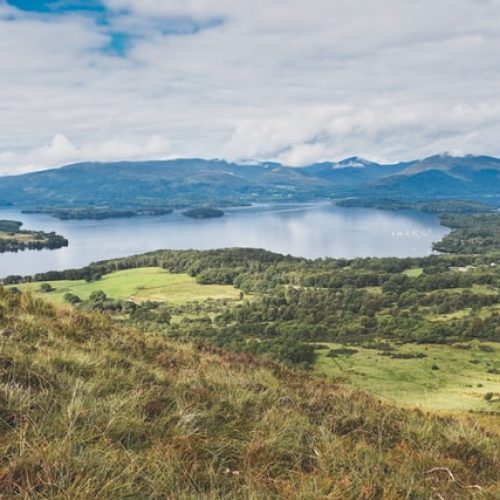
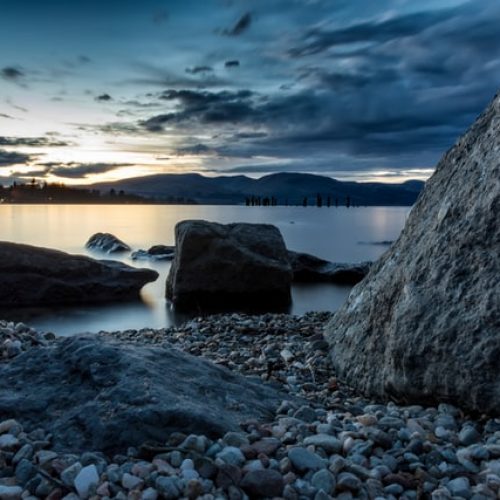
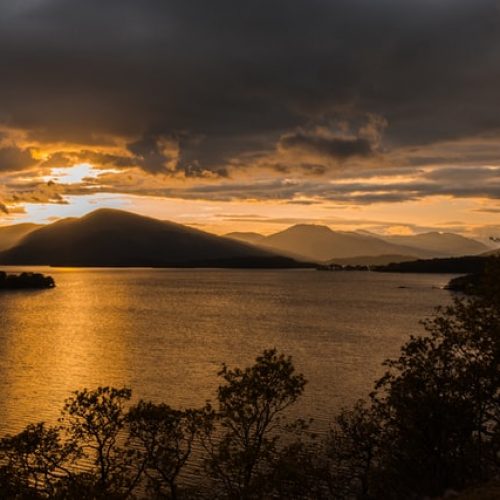
DAY TWO - LOCH FLEET TO ORKNEY
Waking up the next day was a beautiful surprise – no flooding (a near miss) and a crisp view out onto the loch, with no-one else in sight. We packed up and headed North to John O’Groats, with a quick pit stop at Dunrobin Castle for the history enthusiasts and breakfast in Wick.
The north-easternmost tip of the UK was cold and windswept, so we headed on swiftly to Gill’s Bay to catch the ferry across to Orkney (technically not on North Coast 500, but well worth the detour).
Our first stop was Orkney’s one-of-a-kind Italian Chapel, two Nissen huts transformed into a beautiful place of worship by Italian prisoners of war interned in Orkney. Then we headed on to the remote Bay of Skaill on the far-west coast, home to the Neolithic village of Skara Brae, and set up camp by the beach before returning to Kirkwall for fish and chips (making sure not to repeat our mistake of the night before).
We made our way back to the campsite and sat on the deserted beach to watch the sunset. It was one of the most memorable sunsets I’ve seen; looking out to the horizon – and towards Canada, with very little in between but ocean – it felt like we were camping at the edge of the world.
DAY THREE - ORKNEY TO THURSO
We woke up to a clear, sunny day and went for a nerve-shockingly icy morning swim; we ran in, ran out and congratulated ourselves on our hardiness before bumping into a local woman who told us she swam there every day, even in winter.
After breakfast, we explored Skara Brae, an impressively well-preserved 5000-year-old village perched on the edge of the beach; after our wild and windy night in the tent, it was strange to think that people had lived there so long ago, so exposed to the elements.
The day held a whistle-stop tour of other must-see beauty spots on Orkney’s west coast – Birsay, with its tidal island; Yesnaby, home to majestic rock formations (with what looked like fantastic wild swimming spots, but sadly we didn’t have time for a dip), and the mysterious Ring of Brodgar, a 4000-year old stone circle.
We took the ferry back to the mainland in the afternoon, left with the impression that we’d only seen a fraction of what Orkney had to offer, and the strong desire to return one day to discover more of the wild and ancient island.
That night, we stayed in a cosy Airbnb in Thurso, a quaint town on the North Coast 500 – although we’d only been camping for two nights, a hot shower and a proper bed felt like well-deserved luxuries.
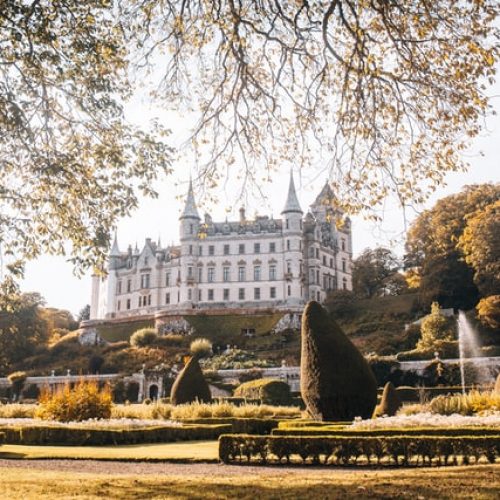
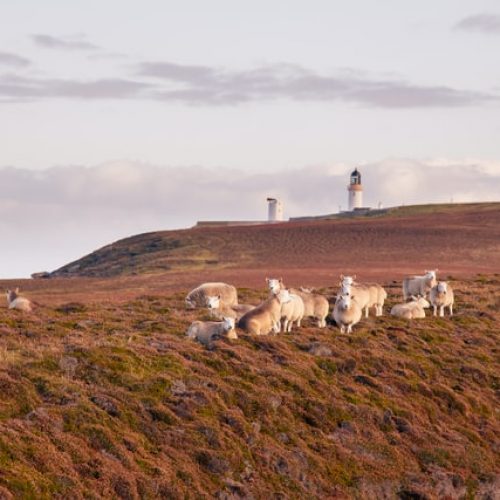
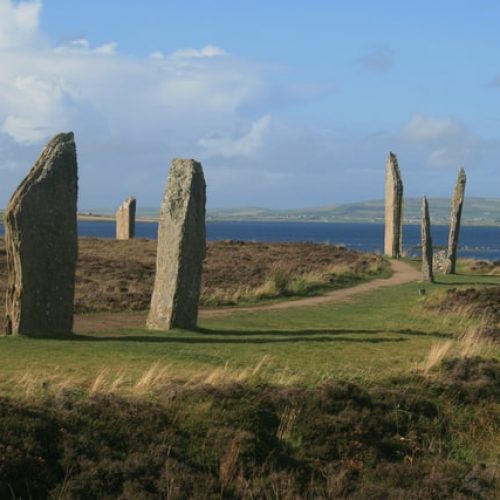
DAY FOUR: THURSO TO SANDWOOD BAY
Day 4 was as much about the spectacular drive across the top of Scotland as the destination; a landscape to rival New Zealand with magnificent peaks and white beaches stretching at every turn, from Dunnett Head to breath-taking Tongue Bay and Loch Eriboll. Like our night on Orkney, the drive left us wishing we had more time on the North Coast 500; even that one stretch of coast held days’ worth of mountains to climb and bays to explore.
Our one stop along the way – discounting, of course, the photo opportunities at every turn – was Smoo Cave, a majestic sea cave with a 50ft high entrance, three chambers and a vast natural waterfall.
Our destination for the night was the wild and secluded Sandwood Bay. One of Britain’s most remote beaches, it has no road access; we parked at Blairmore Carpark and schlepped 6.5km with the tent, camp stove and the warmest clothing we could find. The walk was worth it; as we rounded the final hill, 1.5 miles of pale pink sand, dunes and rugged cliffs opened out ahead of us. We set up camp in the sheltered dunes and fought the cold with hot pasta as the sun went down.
DAY FIVE: SANDWOOD BAY TO ULLAPOOL
There were a couple of other wild campers further along the beach, but we awoke in our sheltered spot with the sense of being completely alone. We went for a swim – or rather, took a battering from the waves of the North Sea – as the sun broke through the clouds, and warmed up with eggs and baked beans on the beach.
After exploring the beach in daylight, we trekked back to the car and began another unforgettable drive down the North-West coast to Ullapool. A highlight was Ardvreck castle, a striking, tumble-down ruin jutting into Loch Assynt, framed by the surrounding hills. We agreed it would’ve made an unbelievable camping spot if we’d had more time – just another reason to return to the North Coast 500.
We pitched up further South, on the shores of Loch Lurgainn and in the shadow of the imposing Stac Pollaidh. We didn’t get the chance to explore too much thanks to our first proper encounter with Scotland’s famous midges, so we set up camp in the first flat spot we could find and hared down the road to Ullapool for a delicious dinner at the Arch Inn.
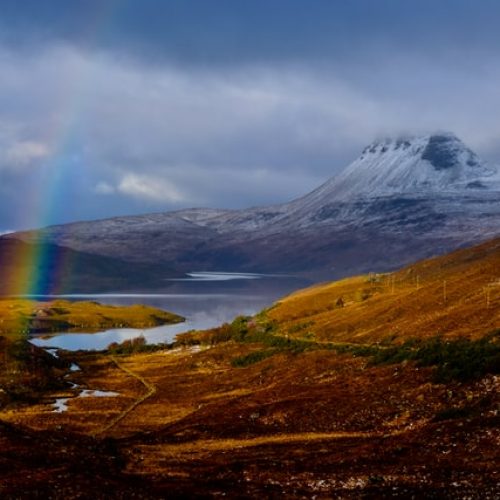
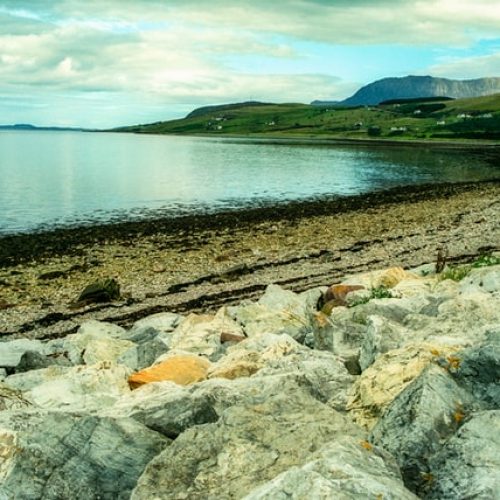
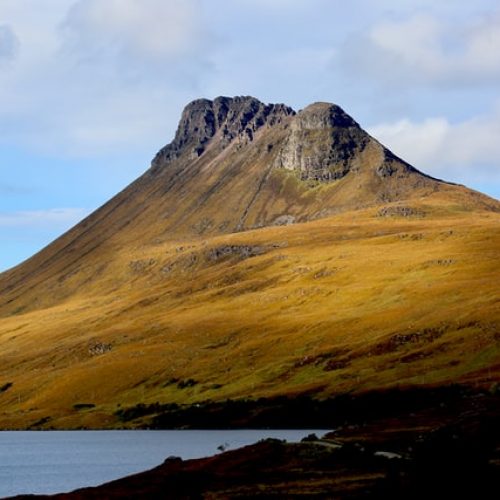
DAY SIX: ULLAPOOL TO GLENELG
After braving the midges for a scenic wake-up dip in Loch Lurgainn, we headed back to Ullapool for breakfast and then on another magnificent coastal drive of the North Coast 500 to our final destination – a whitewashed cottage in the seaside village of Glenelg, opposite the Isle of Skye, where we’d booked to stay for a week with other friends.
Because of time limitations, we had to miss out several places I’m still dying to visit – Torridon, Gruinard Bay, the famous, twisting Bealach Na Bà mountain road near Applecross – but all the same, the home comforts at our cottage in Glenelg were a real treat; I realised I hadn’t properly warmed up since Thurso.
For the next week we explored Glenelg and the surrounding area; plenty of wonderful wild swimming spots (including a huge waterfall just 10 minutes away), walks and tasty meals at the Glenelg Inn, plus a sunny day trip to Skye.
ADVICE FOR FELLOW ROAD-TRIPPERS
GO FOR AS LONG AS YOU CAN!
Our North Coast 500 road trip will go down as one of my favourite experiences to date, but 6 days wasn’t long enough to explore as much as we wanted. If you don’t have long, make sure you plan well and prioritise; I’d recommend the North and West coasts in particular. Alternatively, take a guided tour and leave the planning in someone else’s hands.
CHOOSE YOUR VEHICLE WISELY
Although at times a campervan would’ve made it easier to find a spot to sleep (and definitely would’ve been warmer), we were very grateful for our tiny car on the single-track roads. Whatever you go for, make sure you feel comfortable driving it; the North Coast 500 majors on narrow, twisty roads
FOR WILD CAMPERS
Plan your camping spots in advance. It turned out okay in the end, but we could easily have been washed away on the first night if we’d pitched a bit closer to the water’s edge – which might’ve put a bit of a dampener on the trip. Planning ahead makes everything less stressful and gives you more time to enjoy your surroundings.
Bring warm clothes – and lots of layers. Sometimes at night – especially on Orkney and Sandwood Bay, it got very cold. I could’ve even done with a little hat for my nose. Waterproofs are also a good idea; although we avoided the rain, we were constantly outrunning a storm – if we’d started even a few days later, it would’ve been a very wet holiday.

Freelance travel writer
